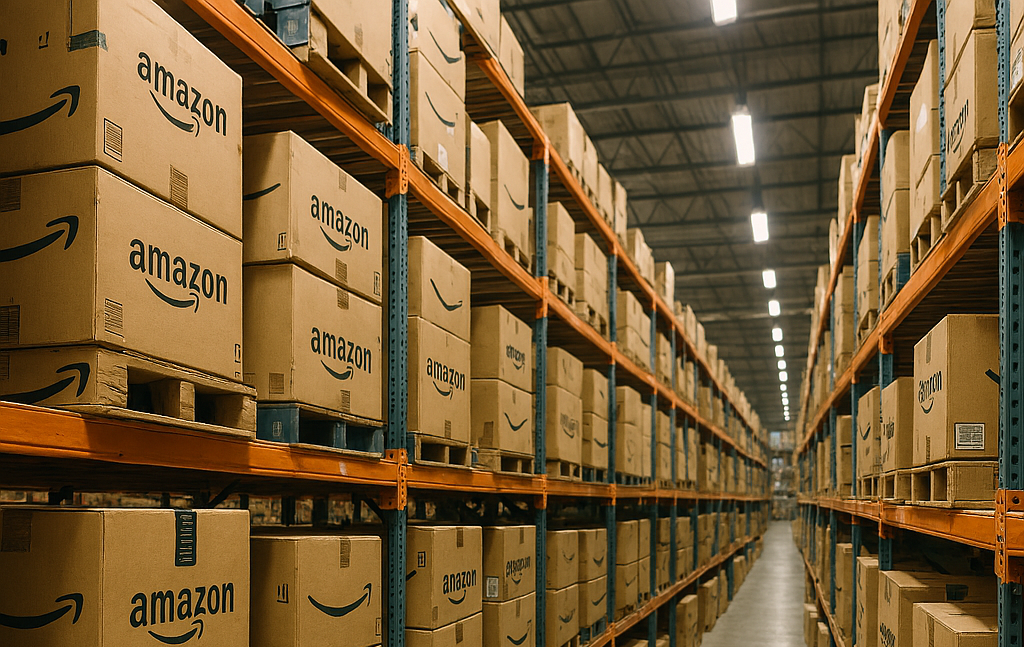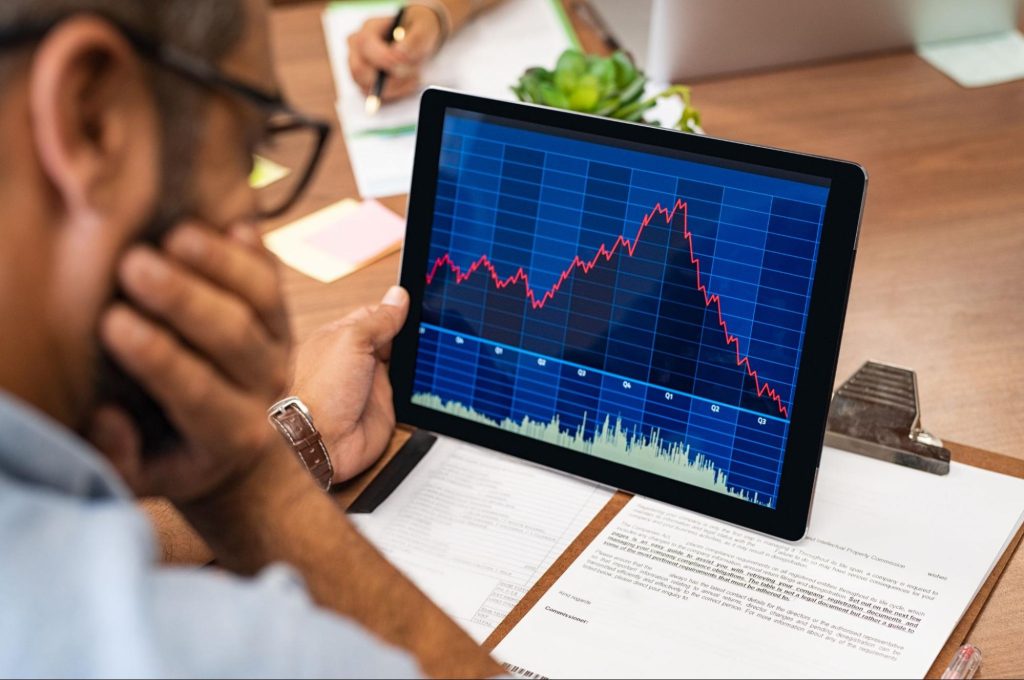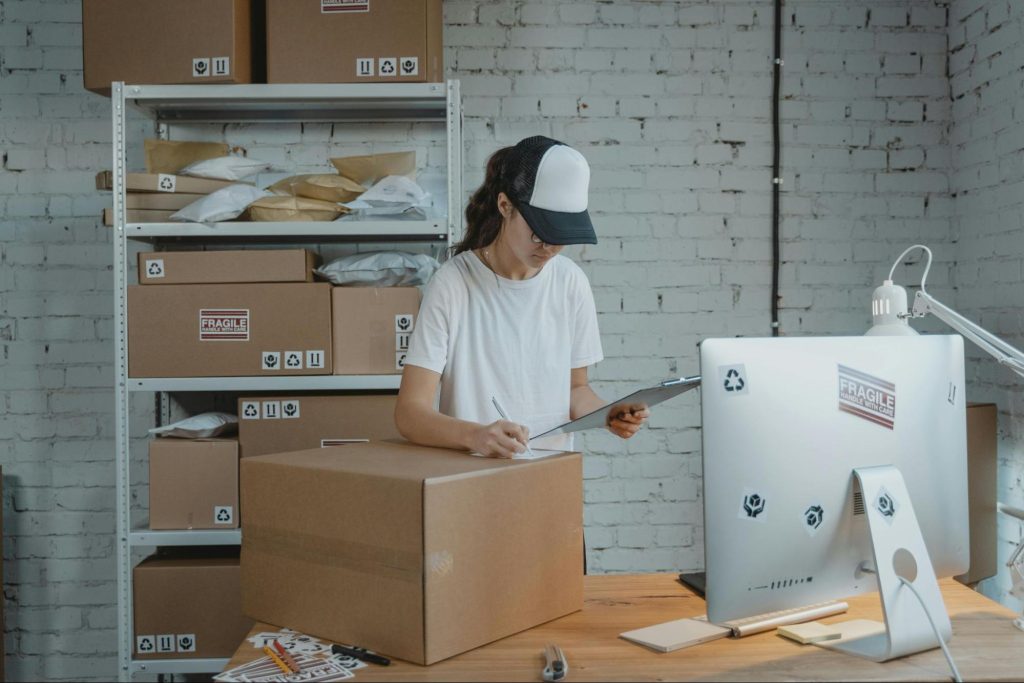Starting your Amazon FBA wholesale journey is exciting—but it can also feel like standing at the base of a mountain, uncertain of which path to take.
With so many moving parts to consider, from finding brands to managing inventory, it’s natural to feel a bit overwhelmed at first.
The good news? You don’t need to figure it all out at once. We have broken down your first 90 days into manageable weekly focuses and leveraging powerful free tools like Keepa and Snov.io, so you’ll build momentum without the stress. This roadmap will guide you through establishing your Amazon FBA wholesale business one step at a time, ensuring you’re always moving forward with clarity and purpose.
Let’s transform that initial uncertainty into confident action!
MONTH 1: FOUNDATION AND RESEARCH
Week 1: Setup and Education
Your first week is all about getting oriented and setting up the infrastructure for your business.
Take this time to create your Amazon Seller account, connect your banking information, and start familiarizing yourself with Seller Central’s interface.

This is also your week to absorb foundational knowledge. Learn the difference between wholesale, arbitrage, and private label models, and understand why wholesale offers distinct advantages for building a sustainable business. Spend time learning about FBA fees and how they’ll impact your profitability calculations.
A crucial step this week is setting up Keepa, the free Amazon price and sales rank tracker. Install the Keepa browser extension and create a free account—this invaluable tool will become your best friend for product research. Take some time to learn how Keepa graphs show historical pricing and sales rank data, giving you insights that most beginning sellers miss.
Remember, this educational phase is an investment, not a delay. The knowledge you gain now will save you countless hours and dollars down the road.
Every successful Amazon seller started exactly where you are now.
Week 2: Finding Your Focus and Finances
This week, take a clear-eyed look at your starting capital and determine how much you’re comfortable investing in inventory.
Being realistic about your budget now prevents cash flow problems later. Set aside a portion for operating expenses and unexpected costs—this buffer will give you peace of mind as you grow.
Next, begin exploring product categories. Rather than trying to sell everything, identify 3-5 categories that interest you and seem to have reasonable competition levels.
We recommend categories like Home & Kitchen, Sports & Outdoors, and Kitchen & Dining. This focused approach will make your research more efficient and your expertise more valuable to potential suppliers.
Start practicing your product research skills using Keepa. Look at how the sales rank fluctuates over time—stable ranks typically indicate consistent sales.
The Keepa graphs also reveal how many sellers have competed for the Buy Box historically and whether Amazon itself comes in and out as a seller. This visual data helps you spot patterns that raw numbers might miss, giving you a competitive edge even as a beginner.

As you develop these scouting skills, remember that they improve with practice.
Don’t expect perfection immediately.
Instead, celebrate each new insight about sales rank, competition metrics, and profitability calculations. You’re building muscles that will serve you throughout your Amazon career.
Week 3: Developing Your Brand Approach
Now it’s time to identify potential brand partners. Create a list of 20-30 brands within your chosen categories, focusing on those with quality products but manageable competition on Amazon.
Look for brands that might be underrepresented on the platform—these often make the best wholesale opportunities.
This week, set up your free Snov.io account—this powerful email finder tool will become essential for your brand outreach. Many brands don’t prominently display their wholesale contact information, but Snov.io can help you discover the right decision-makers’ email addresses. The free plan gives you enough credits to get started with your first wave of contacts.
Prepare professional communication materials this week.
A well-crafted email template and simple business overview will make a world of difference in how brands perceive you.
Remember, you’re positioning yourself as a valuable retail partner, not just another buyer.
When you send your first wave of outreach emails using the contacts you’ve found through Snov.io, start with just 10 brands. This smaller batch allows you to refine your approach based on initial responses before scaling up.
Each reply (or lack thereof) offers valuable information about what works and what doesn’t in your communication strategy.
Week 4: Learning Product Selection & Ordering
Use this week to develop clear criteria for the products you’ll carry.
Rather than chasing every opportunity, define the parameters that make a product worth your investment. Consider factors like price point, competition level, and sales velocity.

Deepen your Keepa analysis skills by learning to interpret the “Keepa Sales Rank” feature, which estimates how many units sell per month.
This information is gold for inventory planning.
Take some time to set up Keepa alerts for products you’re considering—this free feature notifies you of price changes and helps you spot potential opportunities without constant manual checking.
Start preparing for your first orders by understanding purchase orders, payment terms, and inventory tracking systems. These business fundamentals might not seem exciting, but they’re crucial to running a profitable operation.
As the month closes, identify 3-5 brands for your initial test orders.
Planning these first purchases carefully will give you valuable experience with minimal risk. Remember, these aren’t just product orders—they’re your first steps toward building meaningful supplier relationships.
MONTH 2: FIRST ORDERS AND OPERATIONS
Week 5: First Orders and Supplier Relationships
The excitement of placing your first purchase orders marks a significant milestone in your business.
Start small—orders under $1,000 let you test the waters without overcommitting. Save all order confirmations and track expected delivery dates carefully.
Use this week to begin nurturing supplier relationships. A quick follow-up call after placing an order can help establish a personal connection. Ask questions about their preferred ordering processes and timelines.
These conversations often reveal valuable information about potential volume discounts or exclusive products down the road.
Continue reaching out to new potential brands while following up with previous contacts. As your Snov.io skills improve, try using its domain search feature to find purchasing managers and wholesale directors—these specific contacts often yield better results than generic “info@” addresses.
Remember that an email found through Snov.io directly to the right person can be worth dozens of generic contact form submissions.
Each conversation builds your confidence and refines your approach.
Remember that supplier relationships are the foundation of a successful wholesale business—invest time in them from the beginning.
Week 6: FBA Preparation and Shipping
Now comes the tangible part of your business—handling physical products!

Set up a dedicated space for preparing inventory, even if it’s just a corner of your home. Having the right supplies ready—polybags, labels, packing materials—makes the process smoother and more professional.
When your first orders arrive, take time to thoroughly inspect the products and check them against your purchase orders.
This quality control step protects your seller metrics and builds customer trust.
Learn to create FBA shipments in Seller Central and properly label products according to Amazon’s requirements.
Before shipping your products to Amazon, double-check their current selling prices and competition using Keepa.
Sometimes market conditions change between ordering and receiving inventory, and this quick verification step can help you adjust your pricing strategy if needed.
Sending your first shipment to Amazon is a moment worth celebrating!
Take photos to commemorate this milestone. Document the process carefully so you can refine and streamline it with future shipments.
Remember, every successful Amazon seller had a “first shipment day”—you’re following in the footsteps of thousands who started just like you.
Week 7: Listing Optimization and FBA Management
While waiting for your inventory to be received at Amazon’s fulfillment centers, focus on optimizing your product listings.
Check for any errors or improvement opportunities, and make sure you’re properly matching existing ASINs rather than creating duplicates.
This is also the perfect time to learn about FBA inventory management strategies. Understanding storage fees, inventory placement, and restock alerts will help you make smarter decisions about future orders.
Don’t worry about mastering everything immediately—focus on building functional knowledge you can apply right away.
Start using Keepa’s tracking features to monitor how your products perform once they go live.
The sales rank trends will help you understand how quickly your inventory is selling, giving you concrete data for making reorder decisions rather than relying on guesswork.
As data starts coming in from your first shipments, prepare for a second wave of orders.
Use what you’ve learned to refine your process, whether that’s adjusting order quantities or trying one or two new suppliers. Each cycle of ordering gets smoother and more intuitive.
Week 8: Sales Analysis and Process Refinement
Your first sales data is gold—it shows you what’s actually happening, not just what you predicted.
Take time to analyze which products are performing well and calculate your actual versus projected margins.
This reality check helps guide future purchasing decisions.
Keepa becomes even more valuable now as you can compare your sales performance with historical patterns.
Are your products selling as expected based on their Keepa history?
This analysis helps you determine whether price adjustments might improve your sell-through rate or if you should hold steady with your current strategy.
Now is the perfect time to document your processes.
Creating simple standard operating procedures for key activities like product research and inventory preparation might seem tedious, but it pays dividends as your business grows. These systems free your mental energy for strategic thinking rather than remembering routine steps.
Develop a reordering strategy based on your early sales data.
Understanding when to restock helps you maintain inventory levels that maximize sales while minimizing storage fees. This balance becomes easier with experience, so be patient with yourself as you learn.
MONTH 3: SCALING AND OPTIMIZATION
Week 9: Scaling Your Operation
With two months of experience under your belt, you can begin negotiating better terms with suppliers who have proven reliable.
Don’t be shy about discussing volume discounts or extended payment terms—these conversations are expected in wholesale relationships.

Launch a more ambitious brand outreach campaign using Snov.io’s more advanced search features.
The platform’s Boolean search capabilities can help you find very specific contacts like “purchasing manager” or “wholesale director” at your target companies. Your pitch will be stronger now because you can speak from experience and possibly share success stories from your existing products.
Each “yes” gets easier as your business develops a track record.
Use Keepa’s data to identify which of your products have the most stable demand and prices—these are often the best candidates for negotiating larger orders with suppliers. Having specific performance metrics to reference makes these conversations more professional and productive.
Review your capital allocation and cash flow patterns from the first two months.
Adjust your inventory investments based on actual performance data, focusing resources on products and brands that deliver consistent results. Smart financial management is what transforms a hobby into a sustainable business.
Week 10: Advanced Product Selection & Inventory Management
You’re ready for more sophisticated product research techniques.
Use Keepa’s competitive analysis features to identify products where Amazon frequently goes out of stock or where there are few consistent sellers.
These situations often represent opportunity gaps you can fill.
Look beyond the obvious opportunities to find product bundles, multipacks, or seasonal items that might offer competitive advantages. Your growing experience helps you spot potential winners that were invisible to you 60 days ago.

Take time to review your inventory performance metrics in Seller Central. Address any issues with stranded inventory and optimize your storage-to-sales ratio. These small adjustments can significantly impact your profitability and Amazon selling privileges.
Place your third wave of orders with confidence, potentially increasing quantities with suppliers who have proven reliable. Your relationships are maturing, making negotiations easier and often more favorable.
Every reorder builds your credibility as a consistent retail partner.
Week 11: Building Operational Efficiency
After nearly three months of operation, you can identify which tasks consume most of your time.
Focus on creating efficiencies in these areas through templates, batch processing, or improved workflows. Time saved on routine activities can be reinvested in growth opportunities.
Set up systematic Keepa tracking for all your inventory items to automate some of your monitoring work. Customized alerts can notify you when prices drop below certain thresholds or when competition changes significantly, allowing you to react quickly without constant manual checking.
Consider whether your product preparation process could benefit from optimization or even outsourcing.
Compare the costs of prep centers versus handling everything yourself. As your volume increases, what made sense at the beginning might not be the most efficient approach now.
Establish clear customer service procedures that maintain your reputation while minimizing time spent on individual issues.
Simple templates and systems for handling returns and feedback can protect your seller metrics without consuming hours of your day.
Week 12: Long-Term Growth Planning
The final week of your first 90 days is perfect for comprehensive business analysis.
Calculate your overall ROI and identify your most profitable products and suppliers. Keepa’s historical data helps you see which items have maintained consistent performance over time—these often form the backbone of a sustainable wholesale business.
Develop specific growth targets for the next 90 days, focusing on 3-5 key areas for improvement. Whether that’s adding new SKUs, improving margins, or expanding into a new category, clear goals keep your business moving forward with purpose.
Optimize your Snov.io workflow for scaling brand outreach.
Create templates for different types of suppliers and refine your follow-up sequences based on what’s generated the best response rates. Consider upgrading to a paid plan if your volume justifies it—the time saved in finding decision-makers often pays for itself in productive relationships.
Explore automation possibilities that could free you from routine tasks.
From inventory alerts to sales data analysis, technology can handle many aspects of your business, giving you more time to focus on relationships and strategy.
These systems are what allow successful wholesale businesses to scale beyond the limitations of a single person’s time and attention.
Your Wholesale Journey: Beyond the First 90 Days
Congratulations on completing your first 90 days!
What seemed overwhelming at the beginning now feels more manageable as you’ve broken it down into weekly focuses and built your knowledge systematically.
The foundation you’ve established—supplier relationships, product knowledge, and operational systems—positions you for sustainable growth.
Your toolkit has expanded beyond just your Amazon Seller account. Keepa has become an essential companion for product research and performance tracking, while Snov.io has opened doors to supplier relationships that might have remained hidden. These free tools give you capabilities that wholesale sellers just a few years ago would have paid thousands of dollars for in specialized software.
Success in Amazon wholesale comes from consistent effort applied in the right directions.
The sellers who thrive aren’t necessarily the ones who started with the most capital or connections, but those who remained persistent, learned from each experience, and continuously improved their processes.
Your path forward will include expanding your brand relationships, refining your product selection criteria, and building systems that allow your business to grow beyond what you can personally manage day-to-day.
With each new supplier and successful product, your confidence and capabilities will increase.
The wholesale model offers something special that other Amazon selling strategies often don’t—the opportunity to build a true business with valuable assets and relationships.
By focusing on legitimate brand partnerships and sustainable practices, you’re creating something that can provide value to suppliers, customers, and yourself for years to come.
Your first 90 days are just the beginning of what could become a transformative business journey.
Stay curious, keep learning, and trust the process you’ve begun.
The Amazon wholesale ecosystem rewards those who approach it with professionalism, patience, and persistence—qualities you’ve already demonstrated by methodically building your foundation these past three months.
What exciting possibilities will your next 90 days hold?

Leave a Reply